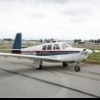-
Members Online
- Fly Boomer
- redbaron1982
- eman1200
- emillerslo
- amillet
- rklems
- kortopates
- VetRepp
- Niko182
- ROZ
- carusoam
- toto
- natdm
- exM20K
- KSMooniac
- Hank
- blaine beaven
- Justin Schmidt
- geoffb
- Vance Harral
- PeteMc
- wombat
- TGreen
- MB65E
- TCC
- Mkruger2021
- Cyril Gibb
- mike_elliott
- M20F
- SoccerCA
- Steve Hughes
- takair
- Robert Hicks
- ElkoRandy20J
- Marc_B
- FlyingDude
- Bob7point7
- hammdo
- MoMooneyMoProblems
- emiliocastelli
- Wapst


Recommended Posts
Join the conversation
You can post now and register later. If you have an account, sign in now to post with your account.